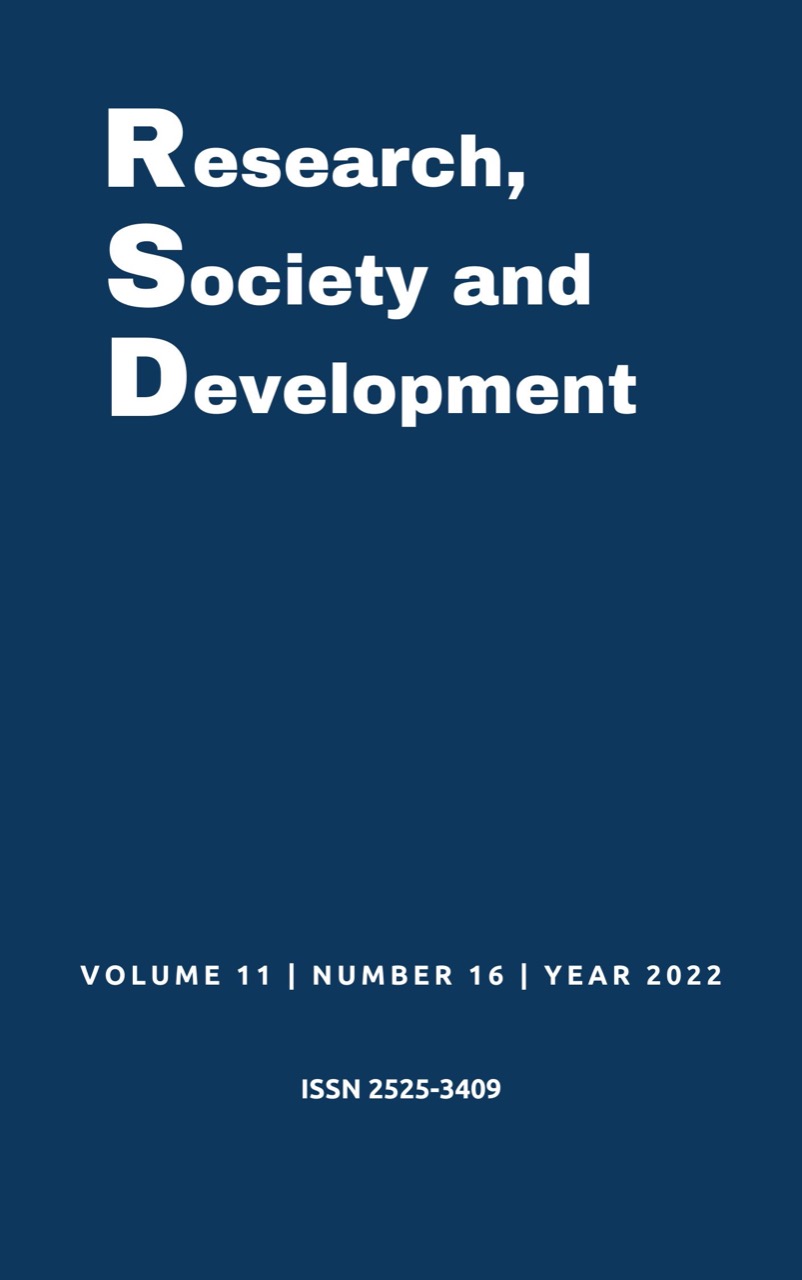Artistic child labor: the legal protection of homeland labor
DOI:
https://doi.org/10.33448/rsd-v11i16.37706Keywords:
Artistic work; Smaller; Society; Labor protection.Abstract
The present work has the fundamental purpose of analyzing the development of children's artistic work in the face of the prohibition of child labor in the country's legal system. Therefore, a synthesis about child labor in Brazil is presented, followed by an approach that proposes to critically discuss the harmonic social acceptance of this activity, since these artistic representations, carried out in the most diverse scenarios, are socially accepted indiscriminately. Focusing on the limits imposed by labor legal protection, the rule and the exception are addressed. Integral protection based on the constitutional principle of human dignity, permission and prohibition – from freedom of expression to relevant rights – and whether the work is developed in an adequate manner to the conditions and legal protection of the child is analyzed. The methodology used is deductive, establishing an approach based on doctrinal, legislative and jurisprudential review on the subject, and with an explanatory and informative purpose, which seeks to clarify the main aspects of artistic child labor in Brazil.
References
Barbosa, A. do C., & Gonçalo, C. V. S. (2022). As atribuições das tecnologias na arte e suas contribuições para a educação contemporânea. Research, Society and Development, 11 (7), e6111729423. https://doi.org/10.33448/rsd-v11i7.29423.
Brasil. (1943). Consolidação das Leis do Trabalho. Decreto-lei nº 5.452, de 1º de maio de 1943. http://www.planalto.gov.br/ccivil_03/decreto-lei/del5452.htm
Brasil. (1978). Lei nº 6.533 de 24 de maio de 1978. http://www.planalto.gov.br/ccivil_03/leis/l6533.htm
Brasil. (1978). Decreto nº 82.385 de 5 de outubro de 1978. http://www.planalto.gov.br/ccivil_03/decreto/1970-1979/d82385.htm
Brasil. (1988). Presidência da República. Constituição da República Federativa do Brasil.. http://www.planalto.gov.br/ccivil_03/constituicao/constituicaocompilado.htm
Brasil. (1990). Estatuto da Criança e do Adolescente. Lei nº 8.069, de 13 de julho de 1990. http://www.planalto.gov.br/ccivil_03/leis/l8069.htm.
Brasil. (2010). Superior Tribunal de Justiça. Conflito de Competência 110.378 Minas Gerais, Relator Ministro Benedito Gonçalves. DJ 16/9/2010. https://processo.stj.jus.br/processo/revista/documento/mediado/?componente=MON&sequencial=12063983&num_registro=201000197558&data=20100923&tipo=0
Brasil. (2018). Supremo Tribunal Federal. Medida cautelar na ação direta de inconstitucionalidade 5.326 Distrito Federal. (Relator Ministro Marco Aurélio, Tribunal Pleno, julgado em: 27.9.2018, DJe 20.3.2020). https://redir.stf.jus.br/paginadorpub/paginador.jsp?docTP=TP&docID=752293043
Cavalcante, S. R. (2011). Trabalho infantil artístico: do deslumbramento à ilegalidade. LTr.
Cavalcante, S. R. (2013). Trabalho infantil artístico: conveniência, legalidade, e limites, 79(1), 2013. https://juslaboris.tst.jus.br/bitstream/handle/20.500.12178/38639/014_cavalcante. pdf?sequence=1&isAllowed=y.
Conferência Geral da Organização Internacional do Trabalho (1973). Convenção nº 138 sobre a idade mínima de admissão ao emprego. 06 de junho de 1973. https://www.tst.jus.br/documents/2237892/0/Conven%C3%A7%C3%A3o+138+da+OIT++Idade+m%C3%ADnima+de+admiss%C3%A3o+ao+emprego.
Feferbaum, M., & Queiroz, R. M. R. (2019). Metodologia da pesquisa em direito: técnicas e abordagens para elaboração de monografias, dissertações e teses (2a ed.). Saraiva.
Gomes, T. O. (2014). A efetividade da tutela do melhor interesse das crianças e dos adolescentes no contrato de trabalho artístico infantojuvenil. https://rosario.ufma.br/jspui/bitstream/123456789/1097/1/ThaynaraGomes.pdf.
Lopes, F. (2018). Há 35 anos, Balão Mágico estreava na Globo: Por onde andam astros mirins? https://noticiasdatv.uol.com.br/noticia/televisao/ha-35-anos-balao-magico-estreava-na-globo-por-onde-andam-os-astros-mirins--19376
Marques, R. (2017). Os limites do trabalho infantil artístico. https://livredetrabalhoinfantil.org.br/noticias/reportagens/os-limites-trabalho-infantil-artistico/
Marques, R. D. (2013). Trabalho infantil artístico: possibilidades e limites. Rev. TST 79(1), 1-2. https://siabi.trt4.jus.br/biblioteca/direito/doutrina/artigos/Revista%20do%20Tribunal%20Superior%20do%20Trabalho/2013/n%201/Trabalho%20infantil%20art%C3%ADstico,%20possibilidades%20e%20limites.pdf
Martins, L. P. (2016). Trabalho infantil artístico: a infância por trás dos holofotes. Âmbito jurídico. https://ambitojuridico.com.br/edicoes/revista-153/trabalho-infantil-artistico-a-infancia-por-tras-dos-holofotes/
ONU. (1989). Declaração Universal dos Direitos da Criança. https://crianca.mppr.mp.br/pagina-1069.html#:~:text=Princ%C3%ADpio%209%C2%BA&text=N%C3%A3o%20ser%C3%A1%20permitido%20%C3%A0%20crian%C3%A7a,desenvolvimento%20f%C3%ADsico%2C%20mental%20ou%20moral
Neto, R. S. (2021). A proteção e a regulamentação do trabalho infantil artístico no Brasil. http://hdl.handle.net/11612/3035
Ramos, P. O. (2019). A controvérsia do trabalho infantil artístico: infração constitucional ou liberdade cultural? https://repositorio.animaeducacao.com.br/bitstream/ANIMA/5588/1/A%20CONTROV%C3%89RSIA%20DO%20TRABALHO%20INFANTIL%20ART%C3%8DSTICO%20-%20INFRA%C3%87%C3%83O%20CONSTITUCIONAL%20OU%20LIBERDADE%20CULTURAL.pdf
Resende, R. (2020). Direito do trabalho (8a ed). Método.
Rodrigues, G. de P. (2019). Trabalho Infantil Artístico. https://servicos.unitoledo.br/repositorio/bitstream/7574/2325/3/TRABALHO%20INFANTIL%20ART%C3%8DSTICO%20-%20GUSTAVO%20DE%20PAULA%20RODRIGUES.pdf
Sarlet, I. W. (2008). Dignidade da Pessoa Humana e Direitos Fundamentais na Constituição Federal de 1988. (6ª. ed.), Porto Alegre: Livraria do Advogado.
Downloads
Published
How to Cite
Issue
Section
License
Copyright (c) 2022 Maria Clara Macêdo de Medeiros; Carlos Francisco do Nascimento

This work is licensed under a Creative Commons Attribution 4.0 International License.
Authors who publish with this journal agree to the following terms:
1) Authors retain copyright and grant the journal right of first publication with the work simultaneously licensed under a Creative Commons Attribution License that allows others to share the work with an acknowledgement of the work's authorship and initial publication in this journal.
2) Authors are able to enter into separate, additional contractual arrangements for the non-exclusive distribution of the journal's published version of the work (e.g., post it to an institutional repository or publish it in a book), with an acknowledgement of its initial publication in this journal.
3) Authors are permitted and encouraged to post their work online (e.g., in institutional repositories or on their website) prior to and during the submission process, as it can lead to productive exchanges, as well as earlier and greater citation of published work.

